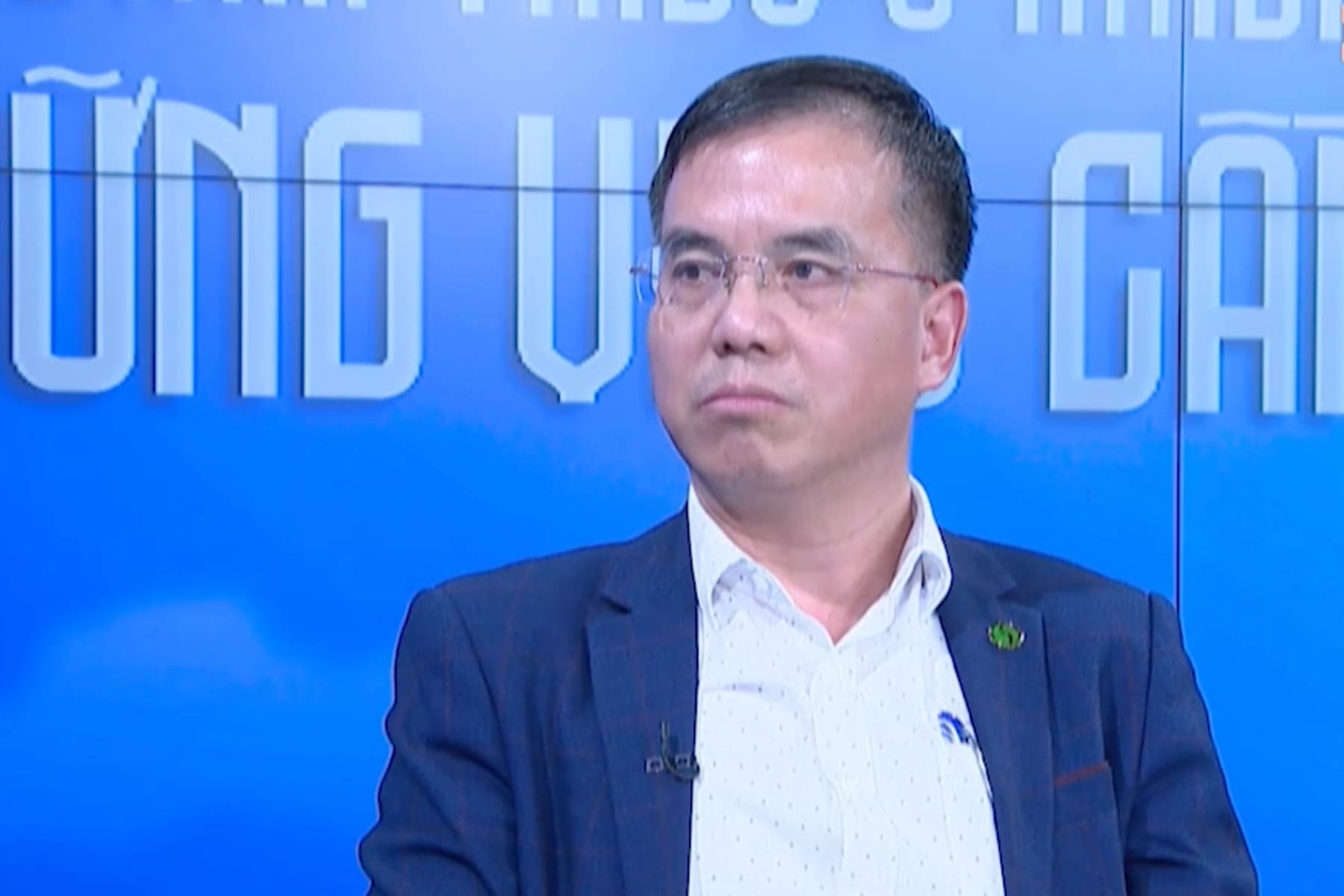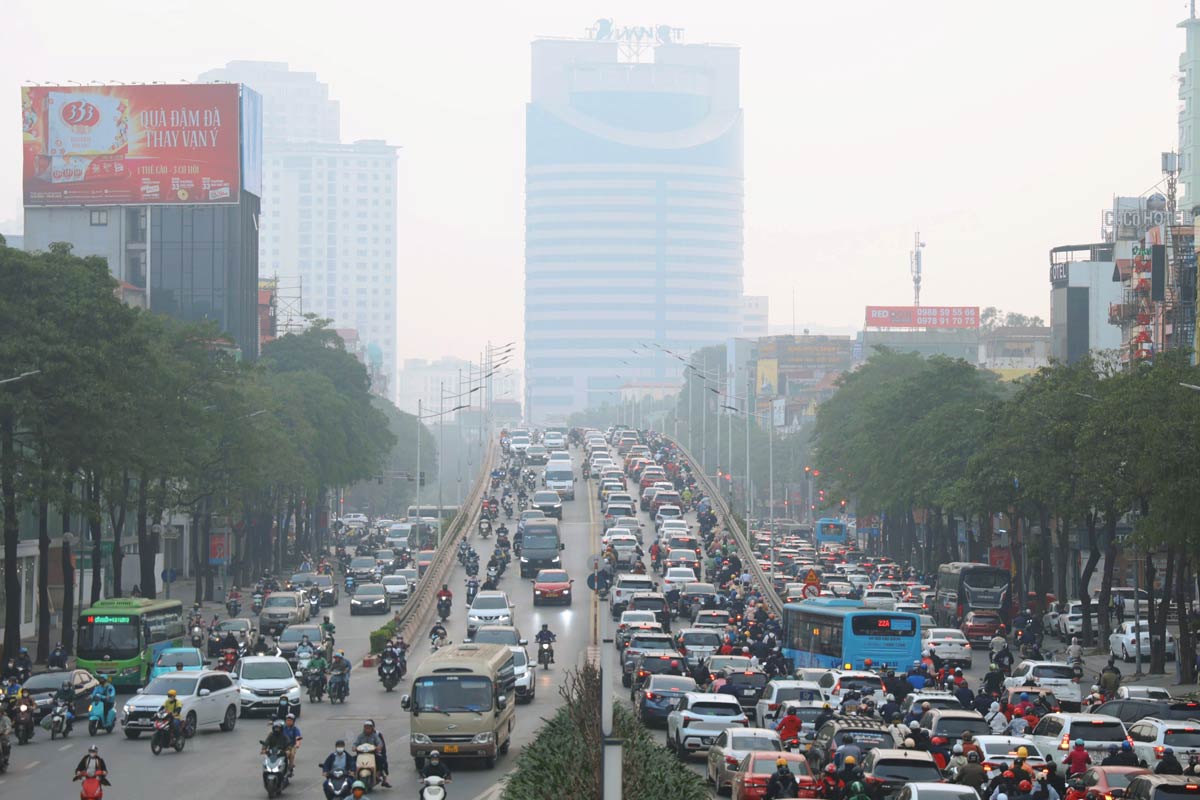Challenges from air pollution
Recorded on April 7, major cities in Vietnam continued to record serious air pollution. According to the IQAir air quality measurement application, at 1:00 p.m., Hanoi ranked 2nd in the world in terms of pollution. Even the Quang Khanh area (Tay Ho district) recorded purple-level pollution - very unhealthy. Ho Chi Minh City also ranked 13th on this list.
The cause of the current pollution is assessed to come from many sources, in which emissions from vehicles contribute significantly.
According to Mr. Nguyen Hoang Duc (Department of Environment, Ministry of Agriculture and Environment), Vietnam is having basic policies in accordance with the legal framework, with the hope of reducing pollution from means of transport such as emission inspection, testing of low emission zones, converting to green means of transport...
"We have coordinated with other ministries and departments in developing environmental technical standards, in the direction of gradually increasing the standards according to the roadmap to ensure minimizing the impact of vehicles in circulation. However, there are still challenges in terms of resources and implementation capabilities, we still need to review and improve further" - Mr. Duc said.

Sharing the same view, Associate Professor, Dr. Hoang Anh Le - Head of the Department of Environmental Management, University of Natural Sciences, Vietnam National University, Hanoi - added that after having reasonable policies, it is necessary to promote communication in the community. Because people and businesses are directly affected by pollution. Raising awareness will help the community participate in this process, somewhat removing difficulties in converting to green transportation.
Apply selective lessons from other countries, avoid " boarding up and dropping the disc"
According to Mr. Nguyen Hoang Duc, major cities in Vietnam have also been learning how to solve the problem of air pollution from many other countries in the world.
Beijing (China) was once considered a black spot for air pollution, when in 2013, this place had a time when the PM2.5 fine dust ratio reached 900 micrograms/m3, 90 times higher than the World Health Organization (WHO)'s recommendation. After more than 10 years with many solutions such as closing factories, accelerating the elimination of industries that cause high and backward pollution, sealing means of transport to create dust... Beijing has temporarily escaped air pollution.
Or Taiwan (China), a place with many motorbikes similar to Vietnam, has developed and implemented solutions to electrify all motorbikes in the future. Mr. Nguyen Hoang Duc emphasized that Vietnam should also selectively apply similar strong policies to bring air pollution to a safe level.

Regarding solutions such as testing low emission zones in 4 inner-city districts of Hanoi or applying emission standards, Associate Professor, Dr. Hoang Anh Le - Head of the Department of Environmental Management, University of Natural Sciences, Vietnam National University, Hanoi - said that some major countries in the world have effectively implemented this plan.
These include the Ultra Low Emission Zone (ultra low emission zone) in the UK to limit vehicles that do not meet emission standards, or environmental environmental environmental protection in Germany when vehicles are required to have environmental labels to be allowed into certain areas...
The application of these solutions in Vietnam in terms of goals is good, but requires a strong monitoring and support mechanism. "We need to avoid giving a solution for a while and then go back there. It is necessary to avoid the situation of " kidnapping and abandoning the disc", ineffective implementation leading to people being greedy with the law" - Mr. Le added.
Associate Professor, Dr. Hoang Anh Le also assessed that if the causes of air pollution have been identified, it is necessary to carefully consider the implementation roadmap and some difficulties are still encountered to effectively resolve them. For example, when there are basic solutions for transportation, it is necessary to carefully study the connection plan for people to move. Avoid having friendly green trains and buses to reduce emissions, but make it difficult for people to travel.











